The Closure of Queens Road 2002-2011
The dispute over the access routes to Cooks Shipyard development
Added by Pat Marsden
The Background
Commercial interests and pressure from the government to force new housing development on brown field sites drove the push for development on Cook’s Shipyard since it’s closure in 2001. In 1993 Edward Symmons Real Estate Professional Services had been brought in by NatWest, as receivers of Cook’s Shipyard, to sort out access to the site and resolve a number of complex planning and environmental issues, including site contamination arising from the previous use of the site. Eventually they stated they had been able to resolve these issues and the site could now be sold on for development.
Local residents responded to letters from the planning authorities about the proposed development of the site over the years by making it clear that all the access routes to the site were completely unsuitable to take additional traffic. The Shipyard Project, supported by local people, fought unsuccessfully to raise money to buy the site for a social amenity.
The site was purchased by Lexden Restorations late in 2001. Although Wivenhoe Town Council (WTC) at first expressed their reservations about the generation of additional traffic and the impact on other existing amenities, they eventually came to the conclusion that the plans for the site were innovative and exciting. Lexden Restorations were granted outline consent for their development scheme for the shipyard in March 2002, and following this the Town Council set up a Section 106 [see Note below] Working Party comprised of Town Councillors, representatives from three residents associations and the Wivenhoe Fisherman’s Association. Their purpose was to draw up an agreement, which also included matters to do with access to the site.
The Proposal to Close the Road
In July 2002 Colchester Borough Council came up with the optional proposal that Queens Road should be closed in order to encourage/force traffic to use the Valley Road route to access the construction site to improve traffic flow management. At a consultation exercise held at the Town Council offices these proposals were understandably supported by residents who lived on Queens Road while at the same time residents who lived on Valley Road opposed them.
Alarm bells began to ring however, when an item appeared on the Wivenhoe web site dated 15 September 2002 stating that the Section 106 Working Party had decided that they did not agree with Colchester Borough Council’s recommendations, because they felt that if Queens Road were stopped up, or became one way, residents in Valley Road would suffer because they would be unable to park their cars on their steep driveways, might experience flooding for short periods, and it would be unsafe for children who used the route to travel to Millfields school.
Understandably residents on Queens Road were unhappy with this decision and felt that their views had not been taken into consideration. Queens Road was also used as route by children travelling to school and also experienced flooding at times of heavy rainfall. They were particularly dismayed that WTC had not only declared that Queens Road should become the ‘primary access route’ to Cook’s shipyard for people working on the site; they also proposed that Queens Road should take two-way traffic.
At this point Queens Road residents decided to bypass WTC and go straight to Colchester Borough Council Planning Department. Contact was made with Richard Gower the Portfolio Holder for Planning and Transportation, who was the man who would make the decision about the closure, and he was invited to walk round the site and listen to a number of residents’ views.
It was pointed out that Queens Road was in the Wivenhoe Conservation Area designated on 17 June 1969 after it had been described as ‘outstanding’ in the Council for British Archaeology’s List of Towns of Architectural and Historic Interest. Particular reference had been made at the time to the Victorian terraces around the railway line. These fragile and vulnerable properties were more than 140 years old; the houses stood right on the road without benefit of a front garden or off-road residential parking; the road itself was very narrow and situated on a steep hill with a v-shaped dip; the pavements were either very narrow or non-existent; heavy traffic could not negotiate the road even in one direction let alone two-way as the Town Council had suggested; there had been displacement of soil to the rear of a number of properties on Queens Road where they backed onto the Wivenhoe Centre, which had obliged Essex County Council to shore them up with concrete bulwarks three years ago to stop them from falling into the school playground. It was felt that these points alone were sufficient to prohibit any further additional traffic from using the road.
The Town Council’s view that the road should be kept open so that the burden of traffic could be equally shared between the access roads, appeared by many to be practical and reasonable but to those supporting the closure it was felt that because Queens Road is long, straight and direct it would immediately become the main access route to the shipyard development.
Following their representations to Richard Gower, supporters of the closure submitted a detailed report to Colchester Borough Council in November 2003, with accompanying photographic evidence, a petition signed by 54 residents and information about the displacement of soil to the rear of properties in Queens Road.
Agreement to Close the Road made by CBC but Matter then Handed to Essex County Council for Processing of Traffic Measures
In March 2005 Queens Road residents were delighted to hear that a decision had been made to close the road. The Town Council on the other hand were unhappy that their recommendations had been ignored and Lexden Restorations also decided that they could no longer continue with the site. The matter was then passed to Essex County Council in order for them to process the various highways issues with regard to the site and it was then a matter of waiting for the Public Notices that would appear when all had been determined. At this time people would again have a chance to respond to the decision to close the road and this would be a good time to write in and remind Essex County of either their support or objection to the closure of the road.
Work Begins on the Site and Plant Machinery Starts to Access Cooks Shipyard via Queens Road Creating Damage to Property and Cars
In Spring 2006, Taylor Woodrow and their sub-contractors, Knight Environmental, moved onto the site and signs were displayed referring to the removal of hazardous material. A new yellow sign appeared at the junction of High Street and Queens Road directing (supposedly) sales traffic to the site. However massive plant machinery and heavy vehicles began to access the site via Queens Road instead, ignoring the designated route for construction traffic, which was intended to go via Bowes Road, Bobbits Way and Valley Road.
Approaches were then made to Paul Bradford who was dealing with the highways issues at Essex County, to ask him if he could do something to prevent these vehicles from coming along Queens Road and damaging not only people’s property but also their cars.
During a telephone conversation Mr Bradford appeared to be under the impression that the views of Queens Road residents were ‘in the minority’. It also became clear that he had not seen a copy of the report and other material that had been submitted to him in November 2003.
He was supplied with another set of copies of the material supporting the closure of the road and asked that these be taken into consideration when any final decision was made. At about the same time an article appeared in the Summer Issue of Wivenhoe news stating that the Town Council were ‘implacably opposed’ to Queens Road becoming a cul-de-sac and the controversy started to pick up speed again.
Campaigning Heats Up as Essex Highways Issues Road Traffic Notices
On 30 June 2006 the Public Notices with regard to the various traffic issues finally appeared in the local paper and on telegraph poles outside residents’ homes. Immediately the campaign stepped up. Letters were sent to Essex County Council from all parties; signatures were collected for petitions for and against the closure. The dispute was becoming acrimonious and Essex County received more than 200 responses to the various proposed traffic measures including the controversial closure of the road.
Since it had by now become clear that the Town Council were determined to oppose the closure of the road, 105 letters were circulated to residents on Queens Road and nearby streets to let them know what was happening, and it was suggested that a ‘Queens Road Residents Association’ should be launched at the earliest opportunity to give residents a more formal voice. Following a good response from 46 residents an inaugural meeting was held on 8 July 2006, with support from the Colchester Federation of Residents Associations.
At around the same time WTC circulated more than 400 letters to ‘affected’ streets requesting that residents oppose the road closure although due to an ‘administrative oversight’ these were not delivered to residents in Queens Road.
The Town Council felt that Queens Road should be kept open so that the burden of traffic could be equally shared between all access roads, but those in support of the closure felt that because Queens Road was long and straight it would immediately then become the main access route to the shipyard development and traffic chaos and congestion would be a consequence at the various junctions with Queens Road (e.g. the High Street, Park Road, Valley Road, and Anglesea Road).
Matters began to be further exacerbated by the failure of the Queens Road road structure as ancient drains cracked under the increasing weight of heavy traffic as plant machinery continued to use it for accessing the development site; cracks appeared in the road surface, holes suddenly appeared and water could be heard running beneath the road as well as frequently pouring down the road; the voids under resident’s houses in the dip of the road became flooded with water. Extensive repair work had to be carried out involving Essex Highways, Tendring Hundred Water Company, Anglia Water and the Environment Agency over a documented period from June 2006 to March 2007.
Finally in October 2006 after three years of campaigning both for and against the closure the news was publicised that Councillor Rodney Bass from Essex Highways had supported the permanent closure of Queens Road and it may be that common sense in a difficult situation as well as an awareness of the documented problems relating to the damage to Queens Road tipped the balance in the final decision by Highways to close the road. To read the full action authorised by the Cabinet Member click on the download below.
Further Attempts to Prevent or Reopen the Road Closure
Although supporters of the road closure were delighted and relieved with the news that the road was to be finally closed as announced in October 2006 and were only too pleased when the work was actually completed in March/May of 2007 this was not the end of the matter as over the next five years various residents and councillors continued to battle to either prevent the closure or following its closure in March/May 2007 to reopen the road.
December 2006
It had been agreed that the developers of Cooks Shipyard, Taylor Woodrow should complete the road works outlined in ECC’s TRO of October 2006, including the Queens Road Closure, before allowing the houses built in Phase One to be released for occupation, but on 13 December 2006 it was discovered by supporters of the road closure that Taylor Woodrow, encouraged by various local councillors who were opposed to the closure, had submitted an application for a variation to the 106 Agreement which would have permitted them to release houses for occupation before completing the road works, which would have created a delay to the closure of the road. This information had been kept from supporters of the road closure who only heard about it at the last minute but by burning the midnight oil an objection was lodged with the appropriate CBC Officer to be considered at the Planning meeting to be held the next day. This was taken into consideration and Taylor Woodrow were informed that they must complete the closure of Queens Road before releasing the houses for occupation.
September 2010
Colchester Borough Council Planning Committee met on 9 September 2010 to discuss Phase Three of the Cook’s Shipyard development. The application was sent back to the developers for another look after taking into account the many concerns of residents who had lodged objections to the development. At this meeting a Wivenhoe ward councillor who had opposed the road closure ‘urged the council to rethink the closure of Queens Road if the scheme went ahead so the pressure of extra traffic could be dealt with by it and surrounding streets’. The committee then ‘unanimously voted to defer the plans and agreed to include the issue of Queens Road being re-opened on the list of issues to be looked at when the scheme went back to the planners’. It was later determined that this councillor should have declared a prejudicial interest in the proceedings and he was not allowed to vote on this particular application at the subsequent meeting pursuant to the provisions of Meetings General Procedure Rule 7 (10).
November 2010
At a meeting of the Neighbourhood Action Panel (NAP) on 9 November 2010 a town councillor brought up the issue of the road closure by suggesting that it had prevented emergency vehicles from accessing a fire at the Wivenhoe Business Centre in early October. However it was pointed out that in mid-October, Highways had reminded people that the road closure had collapsible bollards which could be driven over by emergency vehicles. Essex Fire Service had also clarified that the problem with accessing the site of that particular fire had been due to parked cars in the vicinity of the Business Centre not with access via Queen’s Road. All councillors had been notified of this weeks before the November meeting so it was not understood why it was being raised as an issue. This was pointed out to the panel at the following NAP meeting on 8 February 2011 and it was agreed that this item should be removed from the action plan.
November 2010
At the next CBC meeting held on Thursday 18 November 2010 to discuss planning permission for Phase Three of the Cook’s Shipyard Development the Planning Committee accepted the findings of Essex County Council Highways with regard to the proposed re-think of the opening of Queens Road which had been proposed at the previous Planning Committee meeting held on 9 September 2010.
The clarification provided by Adam Garland the Development Manager at Highways who had made a site visit to Wivenhoe stated that:
‘I have assessed the issues surrounding the proposed re-opening of Queens road and would offer you the following comments.
The current records held by this Authority concerning the original closure show numerous representations both in support and opposition. I have also been contacted by different parties wishing to re-state their representations.
All comments regarding; traffic flow, types of vehicle, parking, road width, building type, access routes, intensification in traffic and so forth have been assessed in light of this current proposal. This Authority feels that reintroduction of traffic through this route would be detrimental to both the efficiency of the highway and the amenity of the local residents and therefore will not support the proposed re -opening’.
January 2011
In spite of the failed attempts to re-open Queen’s Road at the previous year’s planning meetings relating to Phase Three of the Cook’s Shipyard Development, further attempts were made to reopen the road over the Christmas holiday period and in the New Year. In spite of the clear decision by Highways in November 2010, local town, county and ward councillors were making another attempt to reopen the road and had arranged a meeting with Adam Garland on 7 January 2011 on a site visit to Brook Street and East Street to look at traffic congestion caused by the new development. However after analysing the movements of the small number of cars that passed by during the visit Adam Garland said
’that it would be difficult to blame all the congestion on the development. Having regard to all of the above, I do not feel that the requirement of the condition on this current planning application would fall within the tests for what is reasonable and therefore would not be within the terms of the current legislation.
In this regard and, as previously stated, Essex County Council can not support the re-opening of Queen Street (sic).‘
Spring 2011
The WTC’s Mayor’s report in the Spring 2011 Issue of Wivenhoe News stated that:
‘The council’s policy remains the same, that whilst temporary closure during construction was necessary, permanent closure to through traffic was not…’ a view contradicting that expressed by Wivenhoe Town Council’s Section 106 Working Party report issued on 15 September 2002 which stated that the primary access route to the development should be Queens Road, and their subsequent press release of 17 September 2002 which stated that: ‘there should be a preferred access route to Cook’s for people working on the site… and ‘The Town Council agreed this route should be Queens Road.’ It was even suggested that some of the ‘very long and large loads… may be better using Queens Road’.
The Aftermath
All in all it was rather a sad reflection of opposing forces. Reasonableness flew out of the window and for a while the atmosphere became poisoned. Some angry residents described it as a war; some people thought the road had been closed for the benefit of a small group of people which was really not the case. It just didn’t seem like the Wivenhoe we knew.
When the road was finally permanently closed in May 2007 those who had wanted the road closed were pleased because they had at last been freed from the congestion and damage caused by the passage of heavy vehicles and lorries accessing both the Shipyard site and the Business Centre. But at the same time it was recognised that other residents in the village were now suffering the burden of traffic that had been imposed on Queens Road from 2006 onwards. No one who supported the road closure was happy to see plant machinery and lorries thundering along Valley Road to access the site via Anglesea Road.
The real responsibility lay with CBC who had not listened to the many objections to the Cooks Shipyard development when it was first proposed. Everyone was saying that access would be a problem. Many residents thought that the road that carried heavy vehicles across the marshes when the barrier was built could have been reopened and reused but were told that option would be too expensive. In the end it probably all boiled down to money. Closing Queens Road was probably their attempt to bring some kind of alleviating traffic management to the town so it could cope with access to the site but it was also probably the cheapest option. In practice although the move was unpopular those for and against the closure were actually fairly evenly divided and it may have been the only practical and workable solution in a difficult situation and in the end it has actually been a positive thing to have some restrictions on the flow of traffic in a small town
Many might applaud the expensive redevelopment of the shipyard sites but as predicted they brought with them an explosion in car use and congested roads with cars mounting and driving on the pavements on Colchester Road and the Avenue – the main access routes to the town – because the road is blocked with parked cars. The car has become king and many of the original historic roads have become just access routes to the excessive riverside development and Wivenhoe is not such a happy a place as it used to be as a consequence.
Note:
Section 106 of the Town and Country Planning Act 1990 allowed a local authority to enter into a legally-binding agreement or planning obligation, with a land developer over a related issue. These agreements can act as a main instrument for placing restrictions on the developers, often requiring them to minimise the impact on the local community and to carry out tasks, which will provide community benefits.
.

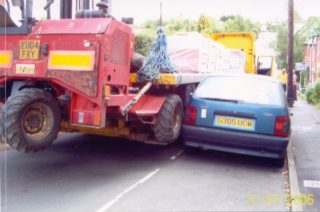
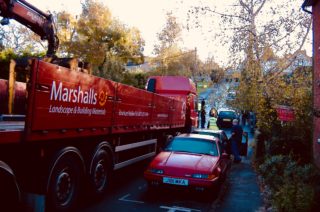
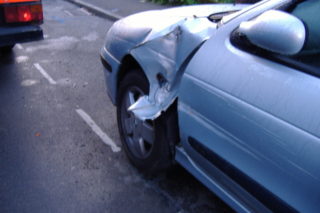
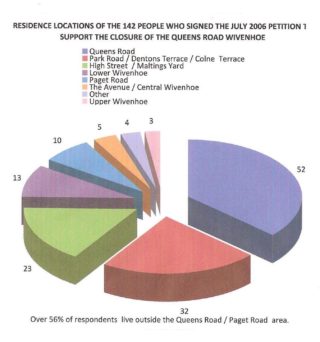
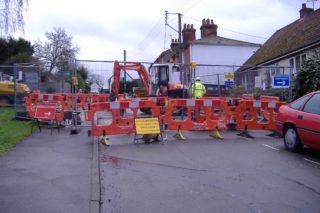
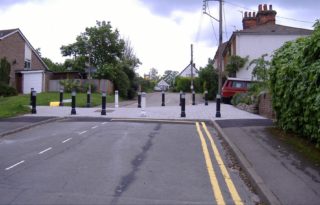





No Comments
Add a comment about this page